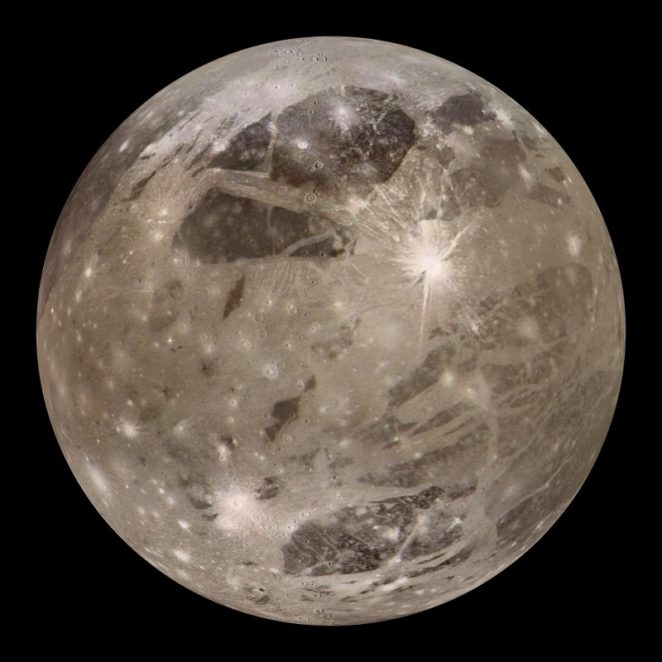
Ganymede is the largest and brightest of the four Galilean
satellites of Jupiter. They are so called because they were the first moons to
be discovered in orbit around Jupiter when Galileo trained his telescope on the
giant planet in 1610.
Ganymede is the third of the four in distance from Jupiter, orbiting
about 665,000 miles out, which is between two and three times the distance
between our own Moon and Earth. However, Ganymede’s orbit is considerably
quicker, at just over seven Earth days.
Not only is Ganymede the largest moon of Jupiter, but – with
a diameter of 3275 miles – it is the largest moon in the whole solar system and
is even larger than the planet Mercury (our Moon’s diameter is 2160 miles and
that of Mercury is 3000 miles).
Ganymede is the only natural satellite the Solar System with
a substantial magnetic field of its own, which suggests that it has a
significant amount of molten iron at its core.
There is also evidence of a saltwater ocean layer some 125
miles beneath the moon’s crust.
The surface shows two distinct types of terrain. There are
dark regions that are heavily cratered and lighter, less cratered, areas that
must therefore be of more recent origin. The two types of terrain intermingle,
thus giving a complex surface.
The younger areas are characterized by long parallel grooves
and ridges which wander across the surface for thousands of miles. The ridges
comprise high mountain ranges that are separated by plains up to ten miles
wide.
Ganymede differs from the inner moons Io and Europa in that
it is not subject to gravitational tidal forces that cause constant surface
movement. However, the evidence suggests that this was the case in the past,
leading to a form of plate tectonics that allowed older portions of crust to move
apart and a mixture of rock and ice to well up through the gaps.
There is also evidence that Ganymede has a tenuous
atmosphere that contains oxygen. This would have been formed when water
molecules in the icy crust were broken down by charged solar particles.
The name Ganymede derives from Greek mythology but is
unusual in being the name of a male person rather than that of a female who was
seduced by Zeus (i.e. Jupiter). Ganymede was, however, abducted by Zeus in the
form of an eagle so that he could serve as cup-bearer to the gods. This was on
account of his high degree of male beauty.
© John Welford
No comments:
Post a Comment